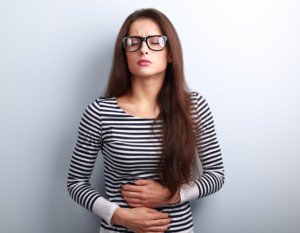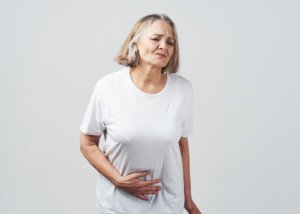
Pelvic pains or aches can have numerous causes, including microscopic colitis, but what exactly does this feel like?
There are two distinct types of pelvic aches that are brought on by my microscopic colitis, an inflammatory bowel disease (IBD) that I was diagnosed with via colonoscopy in May, 2010.
My first flare-up was transient, lasting around two months. My second flare-up began recently and has inspired me to write this article.
Microscopic colitis is a benign condition that produces (at least for me) two kinds of pelvic pain—actually, more like an ache.
The first kind of pelvic pain feels exactly like that from PMS.
There is absolutely no distinction between this first kind and that from premenstrual syndrome.
I am currently in the process of securing gastroenterologists to explain why this is, though I have a theory, which I’ll get to at the end here.
The pelvic pain of PMS, when in its most severe form, feels like labor pains. In fact, the extreme discomfort is actually from the uterus contracting.
A lower grade discomfort also comes from uterine spasms (the uterus is a muscle).
This feeling is very unpleasant even when mild. It’s NOTHING like gas, a bowel movement working its way down your colon, a kick in the lower gut or a pulled low ab muscle. Nothing like it.
- It’s nothing like a runner’s cramp.
- Nothing like an upset stomach from bad food or overeating.
- It’s not sharp or piercing.
- It’s not burning.
- It’s in a class all its own.
I’m being very truthful when I say that this kind of pelvic ache from microscopic colitis is indistinguishable from PMS.
COULD it be PMS? I’m postmenopausal, so that clears that up.
Great relief comes when I press a fist into the area below my belly button.
That’s the kind of pain it is: When I’m seated or lying, my fist is pressed into my lower gut. Ahhh, that brings relief. So does a hot water bottle.
If the discomfort is severe enough, I must lie down on my side and curl up, fist pressed into my gut.
With this second flare-up of MC, I took Naprosyn, which pretty much takes it out.
Naprosyn inhibits prostaglandin production. Excess prostaglandins are implicated in the aches of MC—as well as in the cause of PMS!
(I took Naprosyn only a handful of times; so that I could work at my computer without the pain—but those with MC should not take NSAIDS.)
The second kind of pelvic ache from microscopic colitis feels entirely different than that which I previously described, but it’s still an ache—crampy-gassy-like, and it’s still located in the pelvic region (below the belly button).
This feeling, for me, has been very mild, but noticeable. It’s crampy as in gas, and the best way to describe it is that it feels as though there are gas bubbles acting up.
I can feel something going in there, and it has a vague gassy sensation.
Unlike the first type of pelvic ache, this second type (at least when it’s mild—I’ve never had it beyond mild) stays in the background of my awareness and does not bother me, as long as I know what it’s from.
As for my theory, I believe my body has “hot spots” for excess prostaglandin production: uterus, low back, ankles, wrists, neck, upper legs.
Regardless of the cause, when prostaglandins are released, these hot spots light up.
So even though MC has nothing to do with the uterus, the inflammatory mechanism with MC causes prostaglandin production in the uterus, making it spasm, creating the awful pelvic cramping.
You’ll be hard-pressed to find a doctor who agrees with this, but I challenge you to find a doctor who can prove otherwise!
I know what uterine cramping feels like. I’ve had this with PMS and microscopic colitis.
Especially compelling is the second MC flare-up, which occurred AFTER I completed menopause!
And it’s no coincidence that a few days after the MC diarrhea finally came for the second flare-up, the “uterine” cramping (pelvic pain) disappeared (along with the sometimes-aggravating joint aches!). Hmmmm.
Remember, I’m postmenopausal, and a gynecological exam showed a perfectly normal uterus.
So where is this pain coming from? The only logical answer is prostaglandins—from MC.
“Aching joints can be a symptom of microscopic colitis, but not necessarily. Many patients with aching joints don’t have microscopic colitis, but aching joints and gut problems often go hand-in-hand.
They’re both associated with inflammation, and many doctors speculate that cyclo-oxygenase (COX 2) or prostaglandins are involved because of the function they provide. Prostaglandins are chemicals that generally cause inflammation of our joints.”
– Dr. Jeffrey Fine, MD, the chief of gastroenterology at the Medical Surgical Clinic of Irving, as explained in another article of mine, Why Does Microscopic Colitis Cause Joint Pain?









































